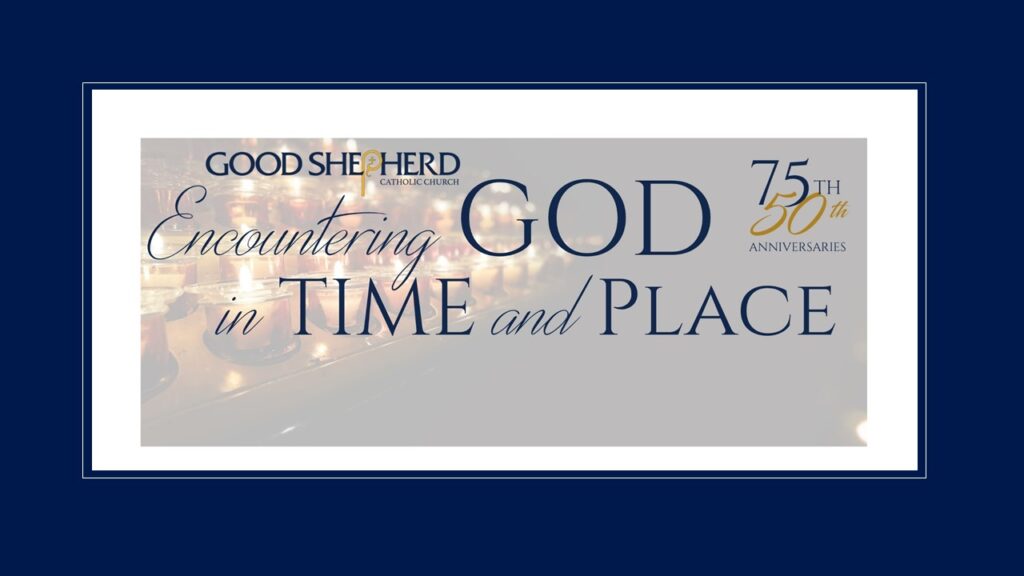WHERE THE PEOPLE OF GOD COME TOGETHER

WHERE THE PEOPLE OF GOD COME TOGETHER
Through our Baptism, we share in the life of the Holy Trinity. The Father, Son, and Holy Spirit are one God in Three Persons. They model for us what a community is … what communion is all about. We are a community … a communion … as the People of God. For almost 75 years, Good Shepherd Parish has been living out the reality of that community. For almost 50 years, we have been gathering as a community in our church on Trindle Road. Over the next several weeks, we will dive into the meaning and mystery of the sacred space in which we gather. This week, we look at the different areas of the church.
THE NARTHEX
The gathering space, called the narthex, is the place where the faithful greet one another before and after Mass. It is the area between the outside doors of the church and the inner doors leading into the worship space. This is where we are welcomed each Sunday, where funerals and weddings begin. In the gathering space, we, at least mentally, discard our secular ways, knowing that we are about to enter holy ground and that our attitude, body language, and even our attire reflect the sacredness therein. The word narthex in Greek means giant funnel. Good Shepherd has three narthexes in which the People of God make the transition from the world outside in to sacred space.
THE NAVE
The part of the church where the People of God gather to pray and worship is called the nave. The word “nave” comes from the Latin navis, meaning ship. We, the People of God, are regarded as passengers on a ship destined for heaven. The nave is not a meeting place but a place of worship; the congregation is not an audience but participants in the Holy Sacrifice of the Mass. In most churches today, the nave is filled with pews or chairs. That was not always the case. For over 1,000 years, churches did not have seats for the congregation; the faithful mostly stood or knelt during the Mass. Not only did they stand, but they were separated by gender. Men were normally on the right, facing the alta,r and women were on the left. The separation of men and women continued in some Catholic churches up through the 20th century. Not until the 13th century did pews or benches become popular.
THE SANCTUARY
The sanctuary is the area, often raised, in the front of the church where the altar, the ambo, the celebrant’s chair, and the tabernacle are located. Distinct from the nave, this is the place reminiscent of the Holy of the Holies, that is, the inner sanctuary of the temple described in the Old Testament. Interestingly, the altar and tabernacle were centuries apart in their introduction into the Church. The General Instruction of the Roman Missal defines the sanctuary as “the place where the altar stands, where the word of God is proclaimed, and where the priest, the deacon and other ministers exercise their offices” (No. 295).
THE SACRISTY
Sacristy comes from the Latin word sacristra, meaning a room near the sanctuary or church entrance. This room contains the bread and wine, sacred vessels, the books, the vestments, and everything needed in the celebration of the Mass. It is the location where the priests and ministers vest. The sacristy was part of the church since the first places of public worship were built in the fourth century. More than just a closet or dressing room, the Sacristy is a place of prayerful preparation.
UP NEXT
Next week, we will look at the importance, history, and placement of the tabernacle.
